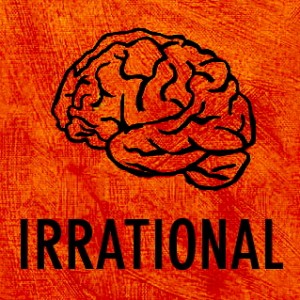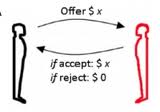Don’t Forget the Rational Decision Maker
 People don’t use logic, utility theory or other forms of rational inference when making decisions about money, careers, relationships, purchases or other important matters. Instead we rely on emotions, behavioral impulses and a small army of short-cuts known as cognitive biases that work very well in some circumstances and terribly in others. At least that is the story behind the modern view of mind and one that cognitive design has deeply embraced. But it leaves something important out, namely there will be a subset of decision-makers that do in fact make decisions rationally. At least that is the finding from a recent research study, Cognitive Control and Individual Differences in Economic Ultimatum Decision-Making reported on PLOS One. The researchers:
People don’t use logic, utility theory or other forms of rational inference when making decisions about money, careers, relationships, purchases or other important matters. Instead we rely on emotions, behavioral impulses and a small army of short-cuts known as cognitive biases that work very well in some circumstances and terribly in others. At least that is the story behind the modern view of mind and one that cognitive design has deeply embraced. But it leaves something important out, namely there will be a subset of decision-makers that do in fact make decisions rationally. At least that is the finding from a recent research study, Cognitive Control and Individual Differences in Economic Ultimatum Decision-Making reported on PLOS One. The researchers:
 “…tested subjects’ behavior in the Ultimatum Game, in which two players have to split a sum of money. One player makes an offer, and the other must accept or refuse the offer. If it is declined, neither receives any money. The rational choice, and the scenario predicted by most economic models, would be for the first player to offer only a small amount to the second player, and for the second player to accept this offer, since something is better than nothing. However, most people do not behave this way. The first player often offers an even split, and the second player often rejects an offer of an uneven split, likely due to strong emotional motives.”
“…tested subjects’ behavior in the Ultimatum Game, in which two players have to split a sum of money. One player makes an offer, and the other must accept or refuse the offer. If it is declined, neither receives any money. The rational choice, and the scenario predicted by most economic models, would be for the first player to offer only a small amount to the second player, and for the second player to accept this offer, since something is better than nothing. However, most people do not behave this way. The first player often offers an even split, and the second player often rejects an offer of an uneven split, likely due to strong emotional motives.”
There are however a number of people that do follow the rational model of offering and accepting a amount much less than half. After all, it is the rational thing to do! The group is small and includes individuals with high cognitive control or the ability to resist impulsive tendencies.
While it is not clear how far this will generalize, it offers an important reminder to cognitive designers. In our rush to leverage and mitigate cognitive biases be sure not to exclude those operating with logic and high cognitive control. The research is also interesting because it presents a way to use a simple task and brain scan to identify high cognitive control.